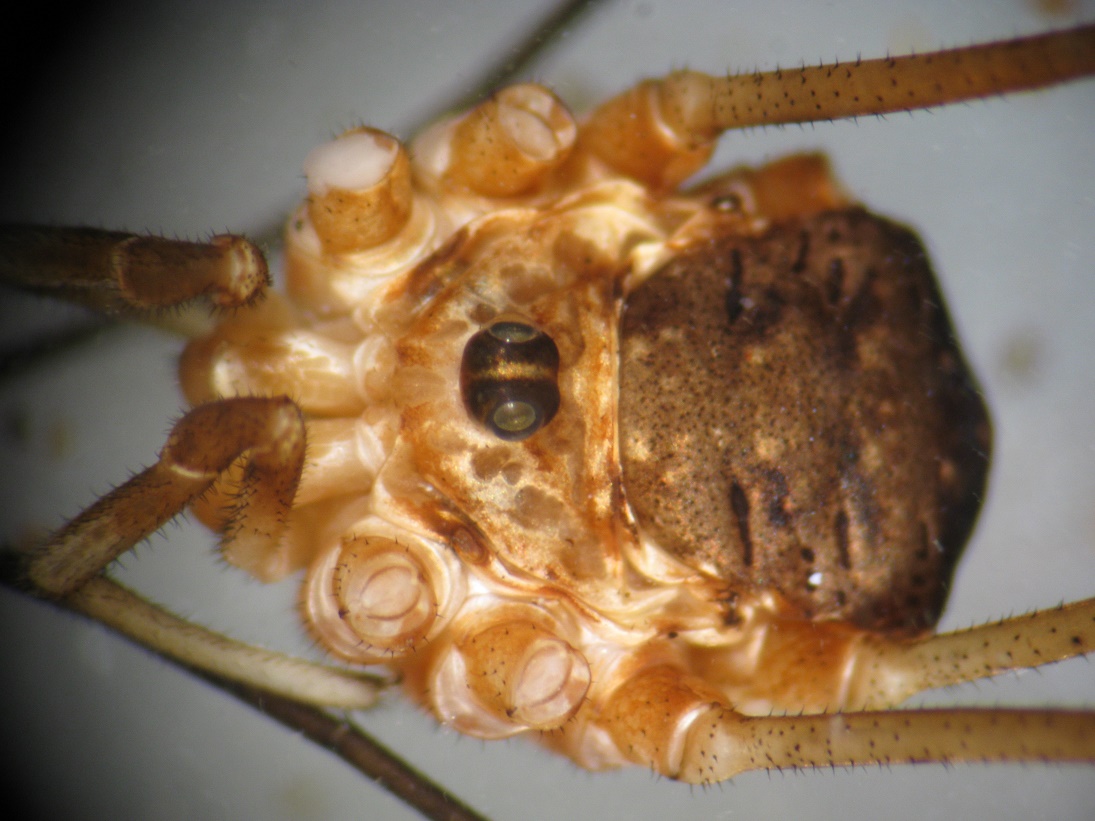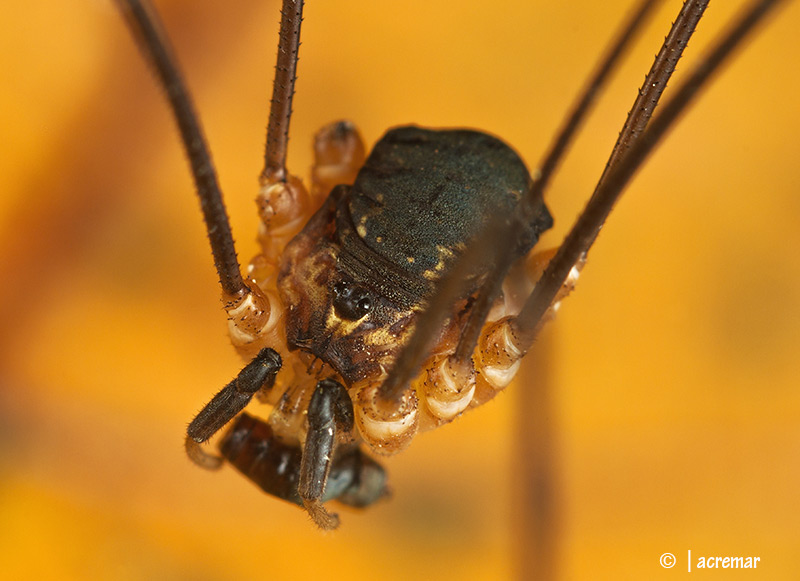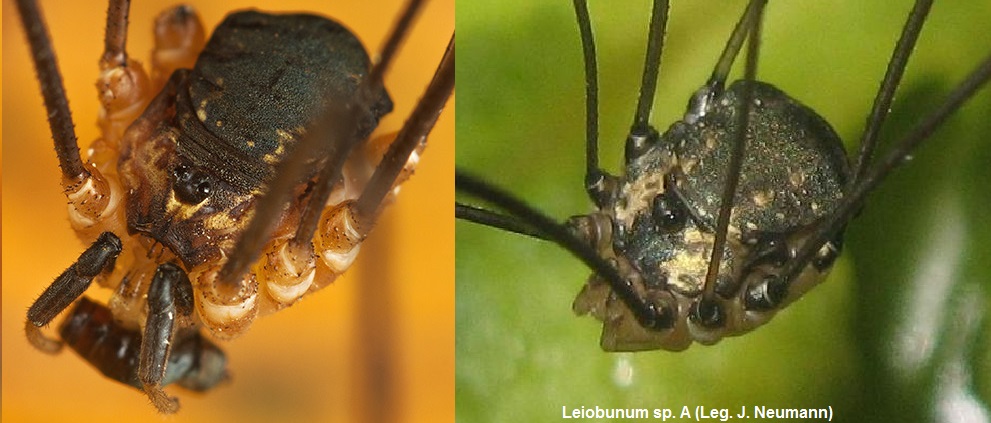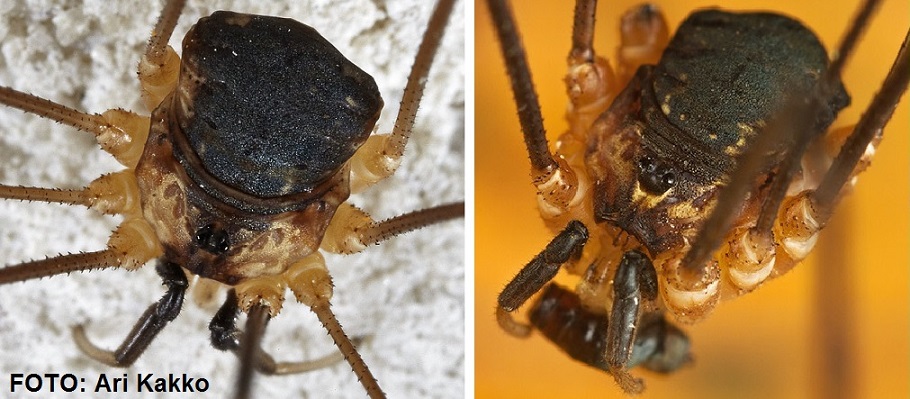|
|
|
|
|
Galleria Tassonomica
di
Natura Mediterraneo
|
 ATTENZIONE! Con tutti gli opilionidi è estremamente importante vedere l'oculario e la zona di fronte ad esso. Questo è vero in particolare per gli opilionidi a zampe corte nei quali il tridente è una caratteristica distintiva. ATTENZIONE! Con tutti gli opilionidi è estremamente importante vedere l'oculario e la zona di fronte ad esso. Questo è vero in particolare per gli opilionidi a zampe corte nei quali il tridente è una caratteristica distintiva.
Si dovrebbe misurare la lunghezza del corpo. Se è possibile scattare fotografie prese dall'alto e di lato. Naturalmente non dovrebbe mancare una semplice foto dorsale. Anche se sono la caratteristica più notevole degli opilionidi, le zampe possono essere ignorate senza problemi perché non hanno virtualmente alcun ruolo nella determinazione.
Per la maggior parte degli Opiliones si arriva ad una determinazione già con le foto. Le eccezioni sono Nemastomatidae ('i piccoli neri') e soprattutto Trogulidae, per i quali è meglio l'analisi del DNA.
|
|
| Autore |
 Discussione Discussione  |
|
|
nymphalidae
Utente Senior
   

Città: Genova
Regione: Liguria

2947 Messaggi
Fotografia Naturalistica |
|
|
Lars Friman
Utente Senior
   
Città: D-14806 Bad Belzig

680 Messaggi
Flora e Fauna |
 Inserito il - 20 ottobre 2014 : 13:38:32 Inserito il - 20 ottobre 2014 : 13:38:32


|
Moin Alessandra e Rocco!
After my opinio the male it is not Amilenus aurantiacus, but a specimen
- for me an unknown species - propably of the genus Leiobunum or Nelima.
The Scutum of Amilenus aurantiacus (m) consist only of one single
"plate", without the 2 free segments in front of it (see pic.). Do You have
a pic. from above?
Lars Friman
Foto: Friman; Österreich, Hoher Dirn, 08.06.2012
Immagine:

238,74 KB |
|
Modificato da - Lars Friman in data 20 ottobre 2014 13:43:32 |
 |
|
|
nymphalidae
Utente Senior
   

Città: Genova
Regione: Liguria

2947 Messaggi
Fotografia Naturalistica |
 Inserito il - 20 ottobre 2014 : 20:33:25 Inserito il - 20 ottobre 2014 : 20:33:25


|
Thanks a lot Lars :)
This is the only shot from above
Immagine:

109,57 KB |
Nymphalidae
Alessandra & Rocco
Link
... we can be heroes just for one day ... |
 |
|
|
Lars Friman
Utente Senior
   
Città: D-14806 Bad Belzig

680 Messaggi
Flora e Fauna |
 Inserito il - 21 ottobre 2014 : 12:57:36 Inserito il - 21 ottobre 2014 : 12:57:36


|
Moin moin,
well I am now rather sure, that this one belongs to the
genus Leiobunum. It has some similarities with the still
unnamed (but well described) Leiobunum sp. A (see pic.),
but e.g.the trochanter of Your specimen are pale and the
ones of L.sp. A. are almost black (etc.). I quess You did
not collect the specimen (?), I think it could have been
a new species (and a male for genital check).
Greetings
Lars Friman
Immagine:

139,46 KB |
|
Modificato da - Lars Friman in data 21 ottobre 2014 12:59:08 |
 |
|
|
Opiliones2000
Utente Junior
 
Città: Noyon
Regione: France

51 Messaggi
Tutti i Forum |
 Inserito il - 19 dicembre 2014 : 16:41:27 Inserito il - 19 dicembre 2014 : 16:41:27


|
Credo che anche un Leiobunum. Sembra anche L. tisciae o L. rupestre. Un maschio.
Emmanuel |
Emmanuel |
Modificato da - Opiliones2000 in data 19 dicembre 2014 16:47:38 |
 |
|
|
Lars Friman
Utente Senior
   
Città: D-14806 Bad Belzig

680 Messaggi
Flora e Fauna |
 Inserito il - 27 dicembre 2014 : 17:17:56 Inserito il - 27 dicembre 2014 : 17:17:56


|
Moin Emmanuel,
yes, the specimen is rather similar to L. tisciae, but a.m.o. not to L. rupestre (m). I have many specimens of L. tisciae from Finnland and from Estland (alk), some of them also identified per DNA-analysis. The specimen (picture belowe, left) was found in Oulu (Finnland, Foto Ari Kakko), it shows a typical adult male of L.tisciae from Finnland.
Greetings
Lars Friman
Immagine:

174,72 KB |
|
 |
|
| |
 Discussione Discussione  |
|
|
|
 Natura Mediterraneo Natura Mediterraneo |
© 2003-2024 Natura Mediterraneo |
 |
|
Leps.it | Herp.it | Lynkos.net
|

 Forum
|
Registrati
|
Msg attivi
|
Msg Recenti
|
Msg Pvt
|
Utenti
|
Galleria |
Map |
Forum
|
Registrati
|
Msg attivi
|
Msg Recenti
|
Msg Pvt
|
Utenti
|
Galleria |
Map |